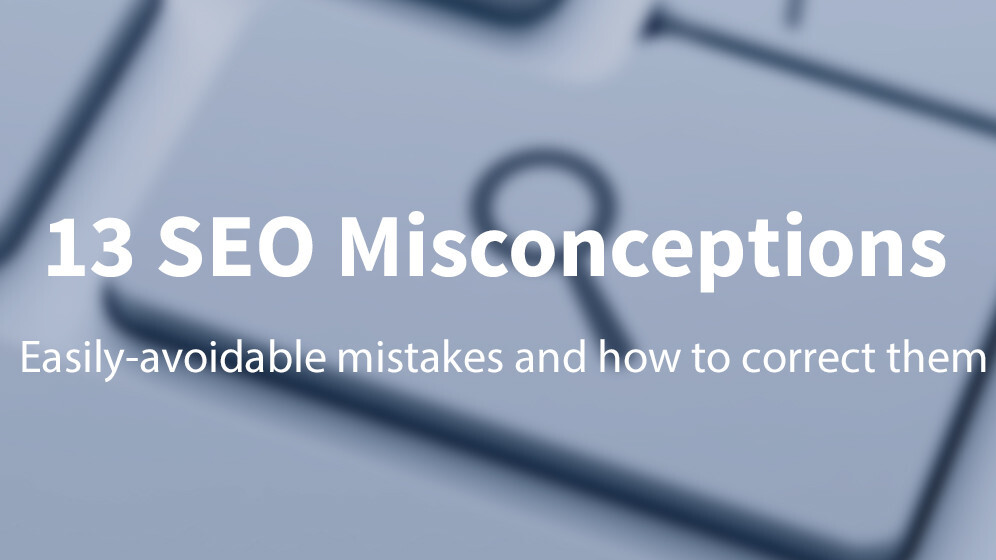
Online marketers spend a lot of time demystifying Search Engine Optimization (SEO), from the jargon and rules to new updates and algorithms. As the technology continue to advance, what you might know about SEO a year ago may no longer apply today.
Since SEO can be quite complex in its ever-adapting nature, it’s easy for blogs, brands and sites to make mistakes based off common misconceptions. We highlight these issues below, along with simple solutions on how to correct them.
1. Confusing PPC (Pay Per Click) with SEO
Google have made the ‘ad’ sign less prominent these days so it’s easy for users to think that the PPC ad that they are clicking on is the first organic search result that comes up. It is therefore recommended that a brand bids on their brand term in order to avoid competitors leveraging the user’s wrong assumption.
In the event that both you and your competitor bids on your brand term, your ad will more likely get displayed over theirs as you have more relevancy.
2. Expecting SEO results to take immediate effect for new sites
When launching a brand new website, it is quite a common misconception that one’s SEO efforts will take effect immediately. However, a site’s history is also taken into account, for which the new site will have none.
Therefore, you should engage in some PPC activity to bolster the visibility of your new website for the first few months until your SEO activity start to show results. You can monitor the status of your SEO activities with tools like SEO PowerSuite’s Domain Analysis.
3. Falling for cheap SEO services who use black hat techniques
Cheap and quick SEO solutions are almost always the ones who engage in black hat techniques. These are aggressive SEO tactics which usually doesn’t obey search engines guidelines.
Popular methods are keyword stuffing (where a certain keyword is nonsensically repeated in the content as many times as possible), using hidden text (hiding all the keywords that you stuffed so that it is not seen by the human eye e.g. making it the same color as the background) and link buying (buying links as opposed to engaging in legit link building activities).
Before engaging an SEO service or agency, be aware of the strategies and technique that they advise. If it seems too quick and easy, it may very well be fake.
4. Considering SEO at the end of a new website build
SEO should be a key consideration to any new website project. Gone are the days where SEO is just all about link building and having proper keywords in your content. Consider having keywords in your page URLs, display an HTML and XML sitemap and implement basic HTML tags like the title tags, meta description tags and header tags.
Make sure that at least a basic SEO checklist is considered and budgeted for in your website build.
5. Not budgeting for SEO activity
Engaging in SEO is free in practice as there is no media spend involved and showing up on search engine results is complimentary. However, there is a fair bit of effort involved in making sure that your site is engaging in as many SEO strategies for it to rank highly on the search results page.
You might want to set aside budget for an SEO tool, consultancy or agency to help you achieve a higher ranking over time. If you need to justify your SEO spending, you can utilize SEO Powersuite’s Rank Tracker tool to compare present rankings with any date in the past, e.g. when you started a new campaign, made important innovations or changed the strategy.
Quick and cheap SEO services that offer black hat solutions may be easy for a short term project, but will cost you in the long run.
6. Skipping the keyword brainstorming phase
When buried in a project, it is often all too easy to focus on getting the content out and subsequently adding in keywords haphazardly the minute before publishing. The problem with this is that some traffic-generating keywords might be forgotten in the rush of getting content out the door.
Keyword brainstorming should therefore be given adequate time, and there various keyword generation tools that will help speed up the process. Again, Rank Tracker is a good tool that connects to your Google Analytics account, which can help to collate a decent set of keywords that are already bring traffic to your site and relevant to your pages’ content.
7. Forgetting to address duplicate content on the site
Many brands don’t realize that their site might contain duplicate content. Examples may include the ‘About Us’ section if you have regional versions of your site, using printer-friendly versions of a URL and utilizing various URL parameters.
Options for addressing this is to use the rel=canonical tag for pages that are essentially the same. An example of this is the Professional Investors section versus the Individual Investors section on the Investec Asset Management website.
There are a lot of overlapping content on both sites, but a redirect is not possible because Individual Investors may not access some parts of the Professional Investor site due to compliance requirements.
If you have regional sites, you would also need to use the href lang tag (rel=”alternate” hreflang=”x”) to show that you have content targeted towards variants of a single language. This is useful if you have two regional sites in English, one targeting the UK and the other targeting the US.
8. Incorporating too many PDFs on your site and forgetting to optimize them
If given the choice, always choose to display an HTML page rather than a PDF as there are more optimizable elements in an HTML page. People are also more likely to share an HTML page rather than a PDF.
However, if you do need to display PDFs on your site, make sure to use plain text as opposed to words in the form of images. Set your title in the document properties, use an SEO friendly URL (with ‘-’s separating each word) and make the file size as small as possible for optimal download speed and usability.
9. Excessive use of Flash content
Search engines find it more difficult to read any content that is not in HTML format. If you use Flash content, it will be harder to rank in the search engine results page.
Always make sure that content you want to rank has an equivalent HTML format. You may also want to replace Flash functionality on your site using HTML5 techniques.
10. Ignoring social elements
Social elements are factors that can increase your ranking, so make sure that you have a social presence, share your articles through your social channels and gain references from social accounts that have good reputations.
11. Having thin content
In 2011, Google rolled out an update called ‘Panda’ which downgraded ‘thin’ or ‘shallow’ content, so make sure content on your site is well written and user-friendly. If your site is image heavy, make sure you apply descriptive alt tags.
12. Not using proper redirects
A redirect is the process of forwarding one URL to a different URL. Some use cases of redirects include moving from an old site to a new site or redirecting from example.com to www.example.com so that users may easily find your website.
A 301 redirect is the proper way to do this as it indicates to both browsers and search engine bots that the page has moved permanently, and carry any link weighting from the original page to the new URL.
13. Focusing on the detail instead of the bigger picture
SEO is a combination of several factors and no single factor can guarantee an increase or decrease in search ranking. Therefore, it is always best to implement the basics of SEO first and try to get your site optimized as a whole, rather than focusing on ultra specific details such as trying to assess how much more weight an H1 header tag has versus an H2 tag.
Always try to implement best practice SEO when possible and don’t lose the bigger picture when getting into the detail.
By correcting these avoidable mistakes, you can better optimize your brand’s SEO strategy to ensure you are seen and heard. What other common SEO misconceptions did we miss? Let’s discuss in the comments below.
Read next: The Good, the Bad, and the Ugly of SEO
Get the TNW newsletter
Get the most important tech news in your inbox each week.
This post has been brought to you by SEO PowerSuite: all the SEO tools you'll ever need under one roof.





